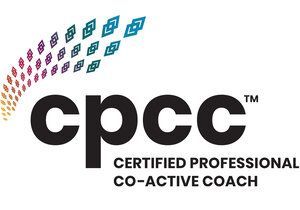How to Improve Sleep Quality?

Are you frequently fatigued in the morning, even after getting ample hours of sleep at night? While it can be a frustrating situation, there may be a simple explanation: you might be having poor sleep quality.
Poor sleep quality can lead to a variety of health problems, including weight gain, depression, and heart disease. Identifying the reasons for insufficient sleep is straightforward, but determining why our sleep isn’t restful is often trickier.
Nonetheless, it is still possible to do so. This article explores the importance of sleep quality, potential causes of poor sleep, and offers strategies to enhance your sleep quality.
Why is Sleep Quality Important?
During sleep, the body undergoes important physiological processes that are necessary for various functions such as cognitive functioning, immune function, and physical health.
Here are a few reasons why sleep quality is important:
1. Allow Our Bodies to Repair and Restore
When we sleep, our bodies release hormones that promote tissue growth and repair, as well as regulate our metabolism and immune system. This means that if we don't get good quality sleep, our bodies may not be able to repair themselves properly, leaving us vulnerable to a variety of physical health issues.
2. Keep Our Mental Health in Check
Studies have shown that poor sleep quality is associated with a higher risk of depression and anxiety. Individuals with poor sleep quality were more likely to experience negative emotions and less likely to experience positive emotions the following day [1].
With poor sleep quality, we may also feel irritable, moody, and find it difficult to concentrate, which can negatively impact our overall wellbeing and productivity.
3. Maintain a Healthy Weight
When we don't get enough quality sleep, our bodies produce more of the hormone ghrelin, which stimulates hunger, and less of the hormone leptin, which tells our bodies that we are full. This can lead to overeating and weight gain.
What Could be Causing Your Poor Sleep?
Several factors may contribute to poor sleep quality, including:
- Stress: High levels of stress can make it difficult to fall asleep and stay asleep throughout the night.
- Poor Sleep Habits: Irregular sleep schedules, excessive caffeine or alcohol consumption, and using electronic devices before bedtime can all interfere with sleep.
- Environmental Factors: Noise, light, and temperature can all affect sleep quality.
Not everyone has the luxury of getting a good night's sleep. Sleep disorders like insomnia, sleep apnea, and restless leg syndrome can further impair sleep quality.
If you are having trouble sleeping, speak with your healthcare provider to identify any underlying conditions and determine the best course of treatment.
How to Improve Your Sleep Quality?
The good news is that enhancing the quality of our sleep might be as simple as improving our sleep hygiene. Similar to maintaining dental hygiene by regularly brushing and flossing, we can improve our sleep hygiene by adopting these few ideas:
1. Regular Sleep Schedule
One way is to establish a regular sleep schedule, which means going to bed and waking up at the same time each day.
Individuals who maintained a consistent sleep schedule had better cognitive performance and were less likely to experience mood disturbances compared to those with an irregular sleep schedule [2].
2. Sleep-friendly Environment
Creating a sleep-friendly environment entails keeping our bedroom cool, dark, and quiet. This can help minimise distractions and make it easier to fall asleep and stay asleep throughout the night.
3. Relaxing Bedtime Routine
Heard of the 3-2-1 technique for better sleep? It is an effective method that can help you to wind down and get ready for sleep. Here are the steps:
3 - Wind Down: Spend 3 minutes winding down before bedtime by engaging in a calming activity, such as reading a book, taking a warm bath, or practising relaxation techniques like deep breathing or gentle stretching.
2 - Unplug: Spend 2 minutes unplugging from electronic devices, such as phones, laptops, and tablets. The blue light emitted by these devices can interfere with the production of the sleep hormone melatonin, making it harder to fall asleep.
1 - Visualise: Spend 1 minute visualising yourself in a peaceful and comfortable sleeping environment. Imagine yourself feeling relaxed and comfortable, sinking deeper and deeper into a peaceful sleep.
Let’s not forget that when it comes to our overall health and wellbeing, good sleep quality is just as important as getting enough sleep.
By establishing healthy sleep habits, such as maintaining a regular sleep schedule, creating a relaxing bedtime routine, and a sleep-friendly environment, we can improve the quality of our sleep and reap the benefits of a good night's rest!
About the Writer
Jeannette Qhek is a dedicated Counsellor and Psychotherapist at Counselling Perspective, where she guides individuals towards mental and emotional well-being. Additionally, she serves as the Wellbeing Strategy Lead and Trainer at Actxa Wellness, curating and delivering science-backed wellness curriculum and wellbeing programs/ workshops for corporations. As the founder of Chill By Nette, a wellness space in Singapore, she offers trauma-informed counselling services and enriching wellness workshops. With more than 6 years of experience in the corporate wellness industry and a deep passion for individual well-being, she hopes to make psychological concepts and wellness research knowledge more accessible, relatable and fun to the public
Connect more with Jeannette Qhek and book a session here.
References
[1] Mauss, I. B., Troy, A. S., & LeBourgeois, M. K. (2013). Poorer sleep quality is associated with lower emotion-regulation ability in a laboratory paradigm. Cognition & emotion, 27(3), 567–576. https://doi.org/10.1080/02699931.2012.727783
[2] Alhola, P., & Polo-Kantola, P. (2007). Sleep deprivation: Impact on cognitive performance. Neuropsychiatric disease and treatment, 3(5), 553–567.










